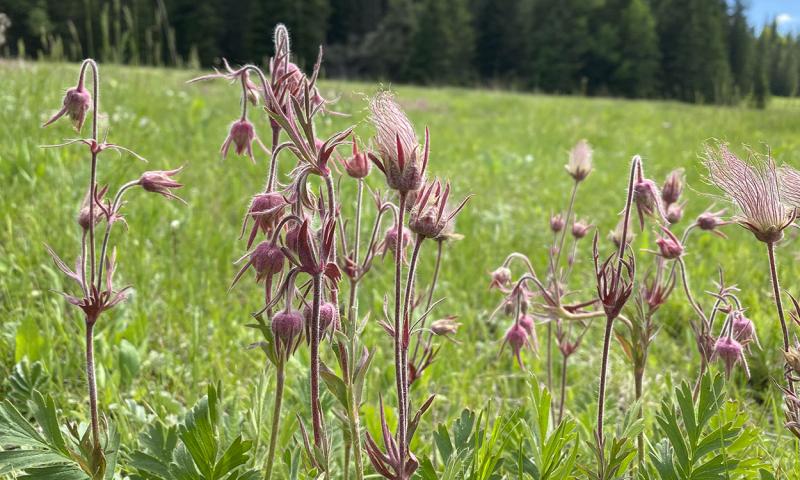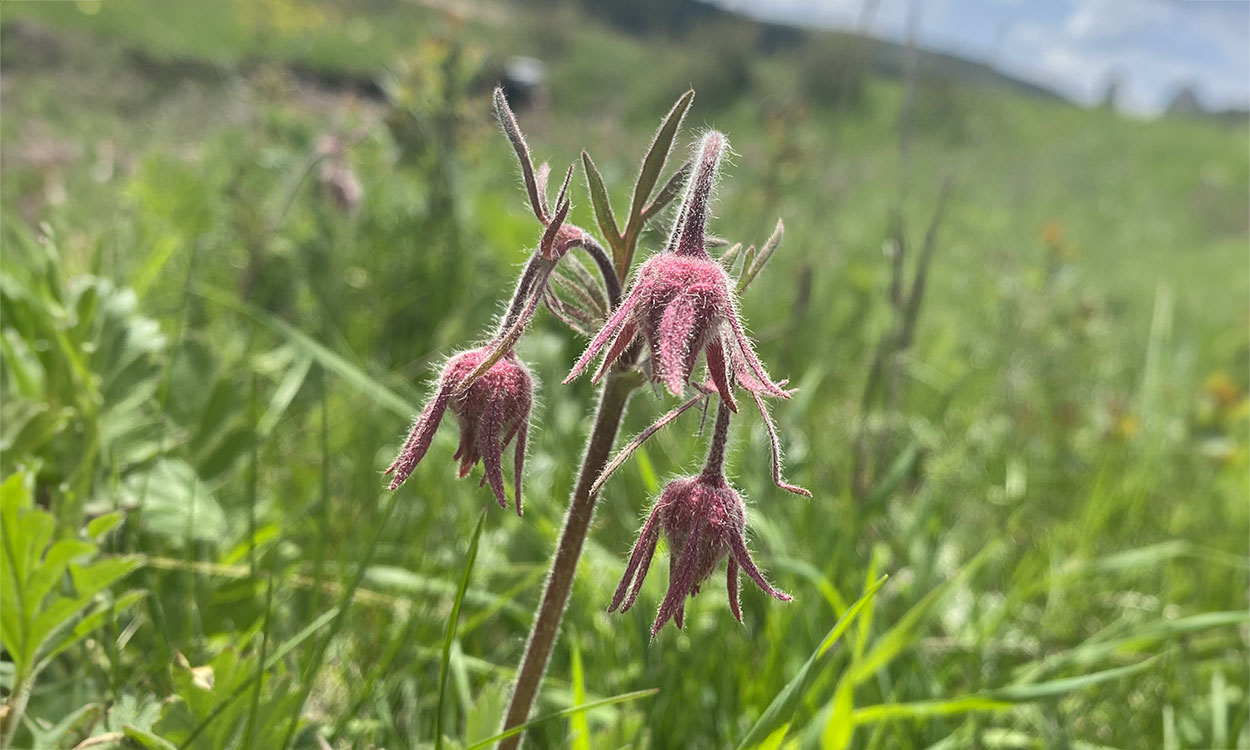
Written by Eric Puetz, Research Associate with the Native Plant Initiative, under the direction and review of Lora Perkins, Associate Professor, in the Native Plant Initiative and the SDSU Department of Natural Resource Management; Robin Buterbaugh, Amanda Bachmann, and Kristine Lang.
Geum triflorum or Prairie Smoke (Rosaceae) is a flowering, herbaceous (non-woody stem) perennial, native to North American prairies. This widespread species is most easily identified due to the distinctive nodding and wispy flowers that resemble plumes of smoke. This species starts flowering in the early spring and has a widespread range that extends from central to northern North America.
Plant Profile
The bright red, nodding flowers are typically in groups of three and remain closed until pollination (Figure 2). Following pollination by bees, a 1 to 3 inch-long feathery, female reproductive structure (style) elongates from the future seed, forming the characteristic wispy crimson or reddish plumes of Geum triflorum (Figure 3) Fertilized flowers contain many single-seeded fruits (achenes). Geum triflorum blooms from early spring through mid-summer. Its foliage includes low-growing, fern-like leaves that branch into smaller leaflets. This species grows from 6 to 18 inches tall and can slowly spread via seed or horizontal underground stems (rhizomes).
Unfertilized Flower

Fertilized Flower

In Your Garden
This species, which is characteristic of native upland prairies, adds a bright pop of color to well-drained gardens with full sun and provides nectar and pollen to pollinators in the early spring. After prairie smoke has bloomed in spring, the spreading leaves double as ground cover. This native species provides a great addition to focal garden spaces and is right at home with common spring flowering bulbs.
About the Native Plant Initiative
Native plants are the foundation that supports insects, pollinators (including bees), birds and wildlife.
Learn More

